Which insulation for a wooden house is better: 7 tips for choosing
Wooden houses are much warmer than their concrete or brick counterparts, they breathe and look great. Alas, even a tree is not so warm that it was possible to completely abandon warming. What to do when you want to preserve the unique features of a wooden house, but at the same time make it a little warmer? Do you really have to say goodbye to a beautiful view of wood? Put an end to the ability of the tree to breathe? And is it necessary to insulate at all house of timber or logs? Maybe it's all just imposed by companies selling insulation? We will try to give answers to all these questions and figure out which insulation for a wooden house is better to choose.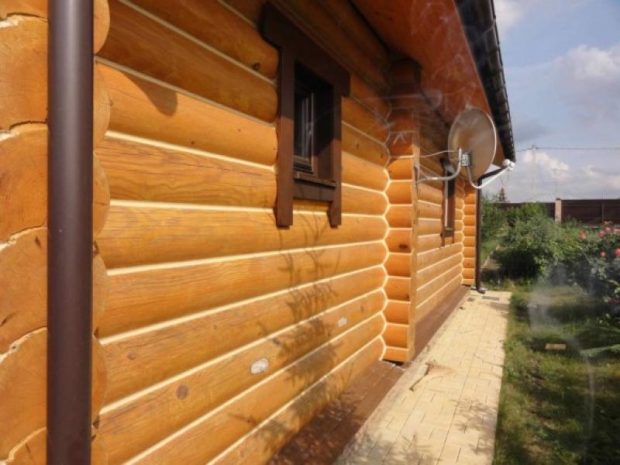
No. 1. Do I need to insulate a wooden house?
Probably, it will be superfluous to list all the advantages of wooden houses. They once and for all conquered the people environmental friendliness, beauty, warmth and durability. Wood has a lower coefficient of thermal conductivity than brick or even aerated concrete. If the climate in the region is warm and mild, and the house is used for relaxation or temporary residence, then you can do with a minimum set of measures. It will be enough to insulate the seams with an inter-crown heater and protect wood with special means.
In regions with cold winters, a wooden house without insulation will require more serious heating. Over time, the wood under the influence of external adverse factors will begin to rot, dry out and crack. The joints are also deformed, too many cold bridges are formed from shrinkage, rodents make holes, and the microclimate in the room is greatly deteriorating. If the house is located in a region with a harsh climate and is used for permanent residence, sooner or later it will have to be insulated. The best time for this is a couple of years after the construction, when the walls sat down.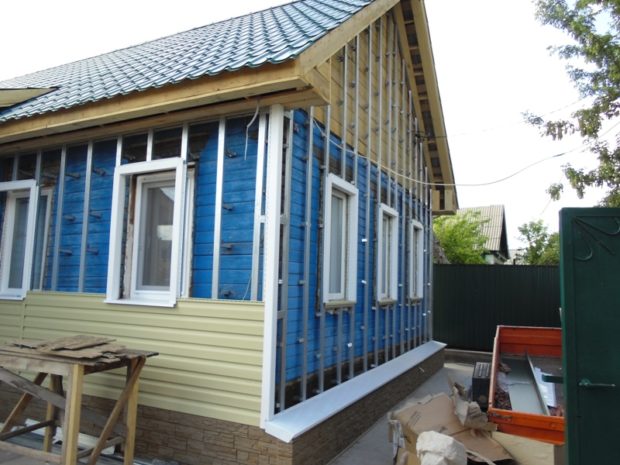
Warming a wooden house gives many advantages:
- the service life of the house will increase;
- inside the house it will become warmer;
- the wood will be protected from all adverse factors: temperature differences, frosts, humidity, pests, condensation, mold development;
- heating costs will be reduced, and the house will become warmer.
The main thing is not to turn the building into a plain and non-breathing box. Therefore, care when choosing a heater for a wooden house and during its installation will not hurt.
No. 2. What should be the insulation for a wooden house?
We emphasize once again that wood is a breathable material, it can absorb and give away moisture, regulating the microclimate of the room. That is why in wooden houses it is somehow especially easy to breathe. If you close the tree with vapor-proof material, we will not only lose the main advantage of the log house, but also harm it, because the violation of air exchange can lead to the accumulation of moisture in the tree, its swelling, appearance mold. Where does the moisture come from? Yes, even from inside the house. To avoid such problems, it is necessary that the insulation be vapor permeable.In addition, wet walls can not be insulated, it is important to use waterproofing, and it is highly advisable to use the technique of a ventilated facade.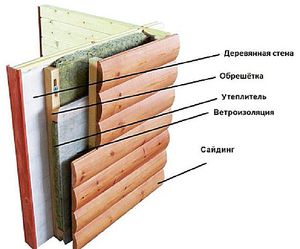
The following requirements are put forward to the insulation of wooden walls:
- vapor permeability;
- low thermal conductivity, the lower it is, the better the material holds heat;
- incombustibility. Everyone knows that a tree is highly flammable and burns, so when paired with it, it is better to use materials that are most resistant to fire;
- low weight. The lighter the material, the easier it is to mount. If the insulation is too heavy, you need a more durable frame, and this time and extra costs.
It is clear that not every insulation from the existing ones is suitable for a wooden house. However, many deliberately make the wrong choice. For thermal insulation, the following materials are usually used:
- all mineral wool (stone wool, slag, glass wool and ecowool), they have high vapor permeability;
- solid polymer insulation (polystyrene foam and polystyrene) is not prohibited to use, but you consciously block your breath at home. Yes, these are easy-to-install and practical heaters, but you will have to organize a very serious ventilation system, and this is a considerable expense in the arrangement and operation. It is advisable to use such materials unless for insulation of a concrete base and foundation;
- loose heaters (vermiculite crushed stone, expanded clay gravel, perlite crushed stone) they pass air and moisture well, are not afraid of high temperatures, are not interesting for rodents, but they have a low coefficient of thermal insulation, so they are suitable only for warm regions, but they have not gained much popularity there either;
- interventional heaters used when it is necessary to preserve the original appearance of the house.
Instead of insulation, to protect the house from rain and wind, they also use wooden lining. When treated with antiseptics and flame retardants, the material really slightly extends the life of the house. Turns out that wooden walls externally clad in wood paneling. Isn't it better to just work on existing walls and close up the seams? But finishing with wooden lining is a good option when using a layer of insulation. Outwardly, you will get the same wooden house, only warmer.
A wooden house is recommended to be insulated precisely from the outside. Internal insulation it takes up a lot of useful space, negatively affects the microclimate, but it is allowed provided that there is a continuous vapor barrier layer inside the house.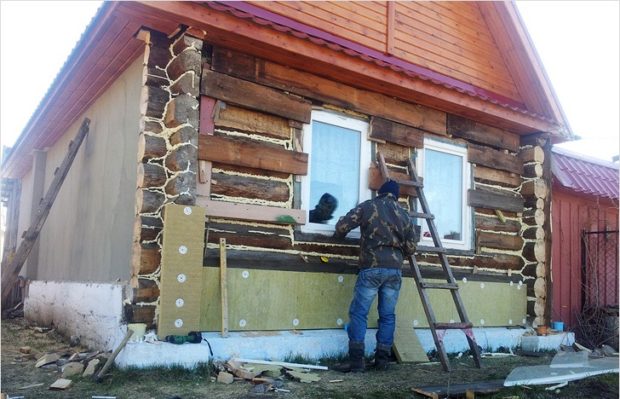
No. 3. Interventional insulation for a wooden house
The most gentle way of warming is the use of interventional insulation. The process itself is called caulk. Ideally, a wooden house should be caulked first a couple of months after its construction, and then after 6-8 months. The gaps between the logs or timber fill tow, jute, sometimes even moss is used.
Caulk the walls begin with the lowest crown of the house. Each crown is first caulked around the perimeter, outside, and then inside. Only after that they move on to the next crown, and so on, until each gap is filled from the outside and from the inside. After caulking, the house may become 5-8 cm higher, but then it will sit down a bit, pressing down the insulation and forming windproof walls.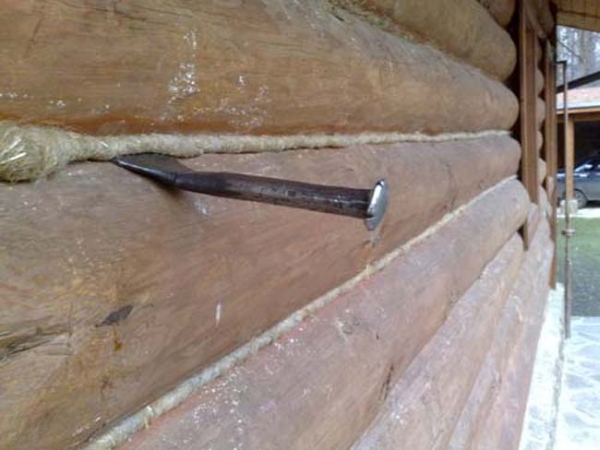
A tow or jute is pushed into the crevices with a hammer, a chisel, a cauldron and a rubber mallet. The process will be time consuming and lengthy. If you are not confident in your own abilities, it is better to entrust the work to specialists.
A more modern method of caulking involves the use of acrylic sealants type "warm seam". They let air through and protect slots from moisture and temperature extremes. Working with them is a little easier. Some people prefer to close the not quite aesthetic hemp sutures with a twisted cord, at least from the inside.
In any case, the wood itself will have to be protected with antiseptics, flame retardants or varnishes.
Number 4.Mineral wool for insulation
Group mineral wat most suitable for warming a wooden house. However, each material from this group has its own distinctive properties, which are worth considering separately.
Stone (basalt) cotton wool
Stone wool made from rocks, basalt is most often used, hence the name. Various binders and additives are introduced into the composition, as a result, a rolled or tiled material is coated with a coating of foil, kraft paper or fiberglass and with such the benefits:
- resistance to fire. Stone wool tolerates temperatures up to 6000C, which is not surprising when you consider the production process and the raw materials used;
- low thermal conductivity (0.038-0.047 W / m * C);
- high vapor permeability;
- hygroscopicity;
- resistance to microorganisms;
- light weight and proper shape facilitate installation;
- the material does not shrink due to density and rigidity;
- basalt fibers do not cause skin irritation.
Of cons fragility of the material can be distinguished. Stone wool is more expensive than other mineral wool.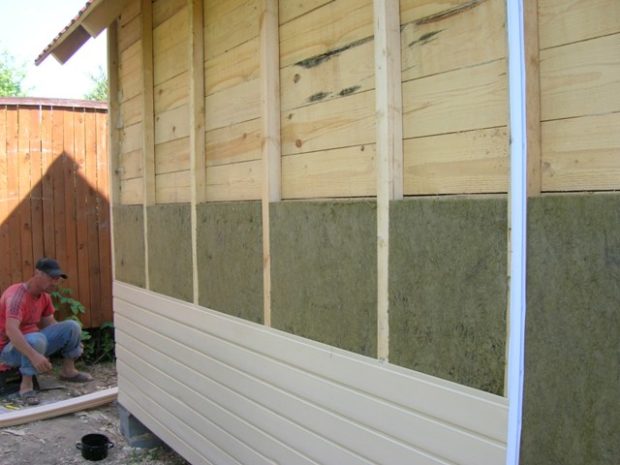
Glass wool
It is produced on the basis of rocks with a high silicon content, but more often - from glass waste. The raw material is melted, limestone, dolomite, borax and other components are added to it. The finished insulation consists of sufficiently long fibers, which explains its stiffness, elasticity and strength, but these fibers are glass, which means sharp. Available in rolls and plates, may have a coating of foil or fiberglass reinforcing.
pros:
- excellent vapor permeability;
- low coefficient of thermal conductivity (0.029-0.046 W / m * C);
- high strength at low density;
- fire resistance, withstands up to 4500FROM;
- resistance to temperature extremes, aggressive substances.
Main minus - fragility and taunting of glass fibers that easily penetrate the skin and respiratory tract. All work is carried out only with complex personal protective equipment. When wet, glass wool loses a significant part of its heat-insulating properties, so high-quality waterproofing will be needed. It is cheaper than basalt wool, but more expensive than slag.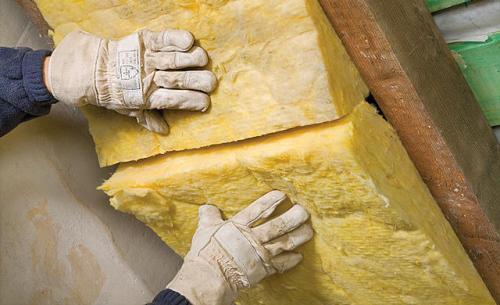
Slag wool
For production, blast furnace waste is used. Since they get to the manufacturers almost for free, then the insulation is inexpensive. Mats and boards have little stiffness, sometimes they get a foil coating on one side.
pros:
- low cost;
- resistance to high temperatures, but on this indicator slagging loses to stone wool, as it can withstand heat up to 250-3000FROM;
- excellent vapor permeability;
- good soundproof properties;
- slag is not interesting for rodents;
- low stiffness of mats and rolls allows you to trim curved surfaces.
Minuses:
- hygroscopicity;
- sensitivity to temperature extremes;
- worst thermal conductivity in the class (0.46-0.48 W / m * C);
- when wet, sulfuric acid can be released, which negatively affects wood and metal;
- the fibers are rather sharp slag, so it is impossible to work without protective equipment.
Of the entire class, slag is the least suitable for warming a wooden house, but it is used actively due to its low cost.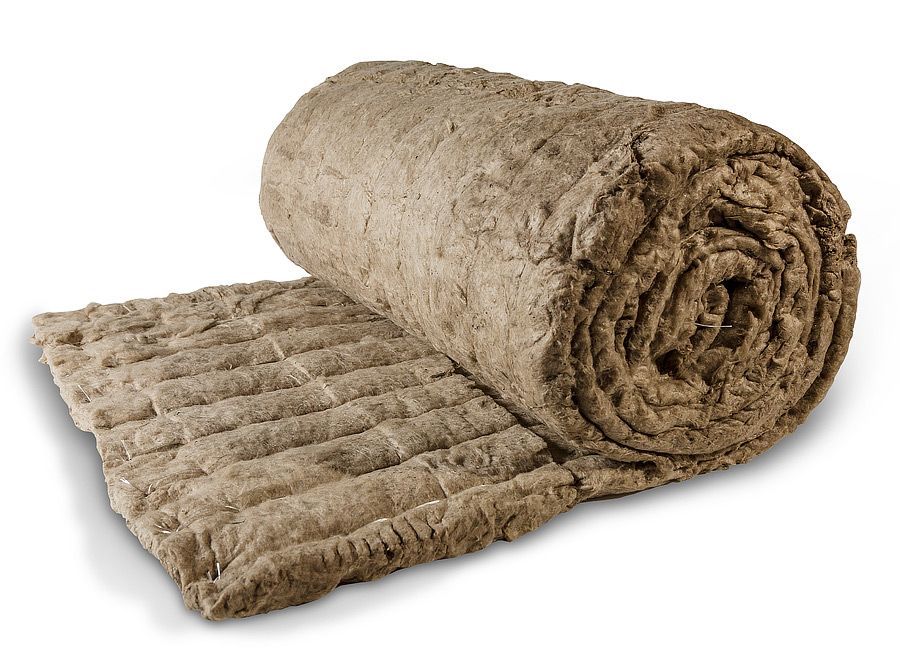
Ecowool
The material is based on paper industry waste. 80% of its composition is cellulose, the rest is additives that make the material more resistant. IN ecowool add flame retardants and antispetics.
pros:
- low coefficient of thermal conductivity (0,032-0,041 W / m * C);
- environmental friendliness and vapor permeability;
- Ecowool, although it can absorb moisture, but at the same time its heat-insulating properties hardly change;
- ability to absorb noise and vibration;
- resistance to rodents and insects.
The main minus consists in installation. Ecowool is a loose material that is sold in bags. Before applying it is loosened with a mixer, and then manually or mechanized is applied to the wall.The denser the layer, the better, since an insufficiently dense layer quickly shrinks, and here it is not far from the cold bridges. Manual installation method is a long time, and there are no quality guarantees. Installation with a pneumatic installation is expensive, as you will have to hire specialists.
The procedure for the insulation of mineral wool (plates and rolls)
Installing a plate or roll insulation is not so difficult. Experts recommend starting insulation, when the house has already shrunk, i.e. about two years after its construction. You will need to work roulette and level, drill, hacksaw, stapler, sealant for wood, a membrane for waterproofing and insulation itself. The calculation is easy to do, just calculate the perimeter of each side of the house, summarize the indicators and add 7-10% of the margin. If a double layer is needed, then the result is multiplied by 2. For a crate, a bar of 50 * 50 mm will go, for a double layer - 100 * 40 or 100 * 50 mm.
The procedure is as follows:
- foundation preparation. Clean the walls of mold, dust and dirt, if there are voids in the crowns, reseal them with a sealant, and then seal the joints with sealant. Cracks in a tree are also best repaired. The wood must be dry, so it works better in the summer after a long period without precipitation;

- padding. If the wood absorbs quickly primerapply a second layer;
- installation of the frame. The bars are fixed in increments of 10 mm less than the width of the insulation. The first beam is mounted near the corner of the house, 5-10 cm from it. Fasten the crate screws;

- installation of insulation plates in the resulting recesses, it is desirable that there are no gaps. Slabs should lie down tightly, but dish-shaped dowels are used for warranty. If a second layer of insulation is needed, it is laid so that the joints between the plates of the first layer are closed;

- installation of a protective membrane using a stapler and tape. Each next strip should go to the previous one by 10-15 cm, it is better to glue the joint with tape;

- installation of a counter-lattice on self-tapping screws, later on a wooden lining is attached to it or other facing material. This is a ventilated facade technique.
There are other ways.. Mineral wool can be mounted on U-shaped metal suspensions. They are placed along the entire length, slots are made in the plates, with the help of which they are worn on suspensions. Next comes the membrane layer, and the suspensions also serve to mount the finish.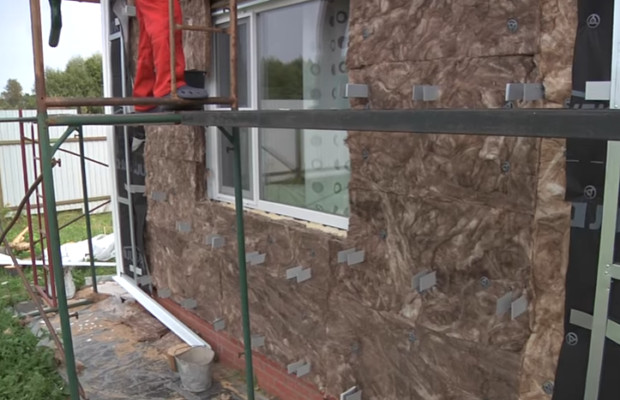
Another way - sticking mineral wool slabs on the wall with additional fixation with dowels. Next, a cement mortar is applied for leveling, it is strengthened with a fiberglass mesh. It remains only to prime the wall, apply a layer plasters and paints (only not acrylic compositions). This is a wet facade method., which the not particularly suitable for wooden housesbecause plaster is a static shell, and the tree is movable. Cracks may occur.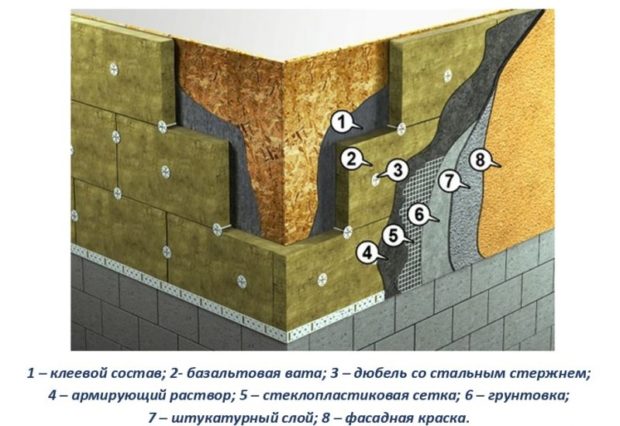
The order of work when insulating ecowool
If you decide to install ecowool manually, you will have to adhere to the following procedure:
- preparation of the base according to the scheme described above;
- installation of lathing from timber with a pitch of 50-60 cm;
- sheathing of the crate with moisture-resistant OSB boards to a height of 80-100 cm from the ground;
- unpacking ecowool, fluffing in containers using a drill with a nozzle mixer. The goal is to eliminate all clots;
- prepared ecowool fill the gap between the wall of the house and the casing, carefully tamp, paying attention to the corners and crevices;
- when the aperture is almost full, another covering is attached to the next 80-100 cm and the actions are repeated;
- in the final, the lining is primed and proceed to facing.

It will be easier when using a special installation. The crate pitch is 1-1.2 m, water is added to the cotton wool before spraying to form an adhesive mass. The cotton is sprayed with a dense even layer, allowed to dry, then the excess is cleaned off, the membrane is mounted and the work is started.
No. 5. Polymer insulation
To recommend this group of materials for warming a wooden house, the hand does not rise.Polymeric materials do not breathe, which means that all the advantages of wooden walls go down the drain. When using such heaters you will need a serious ventilation system. It is justified to use them when warming concrete slabs and stone socles.
Expanded polystyrene
He is popularly called polystyrene. The material consists of a mass of balls that are interconnected to form small cavities.
pros:
- low weight and ease of handling;
- good indicator of thermal conductivity (0,036-0,051 W / m * C)
- low price;
- durability;
- soundproofing.
Minuses more significant:
- flammability;
- vapor tightness;
- in foam they like to make mink rodents;
- water may accumulate in the cavities between the foam balls. The rate of water absorption in volume for 24 hours is 2%, for 30 days - 4%. Not so much, but the accumulated moisture during freezing can destroy the structure of the insulation.
Too much work will have to be done to protect the material from fire, rodents and moisture, and provide ventilation in the house, so what better wooden walls in this way not to insulate - the low price of polystyrene is not justified by other expenses.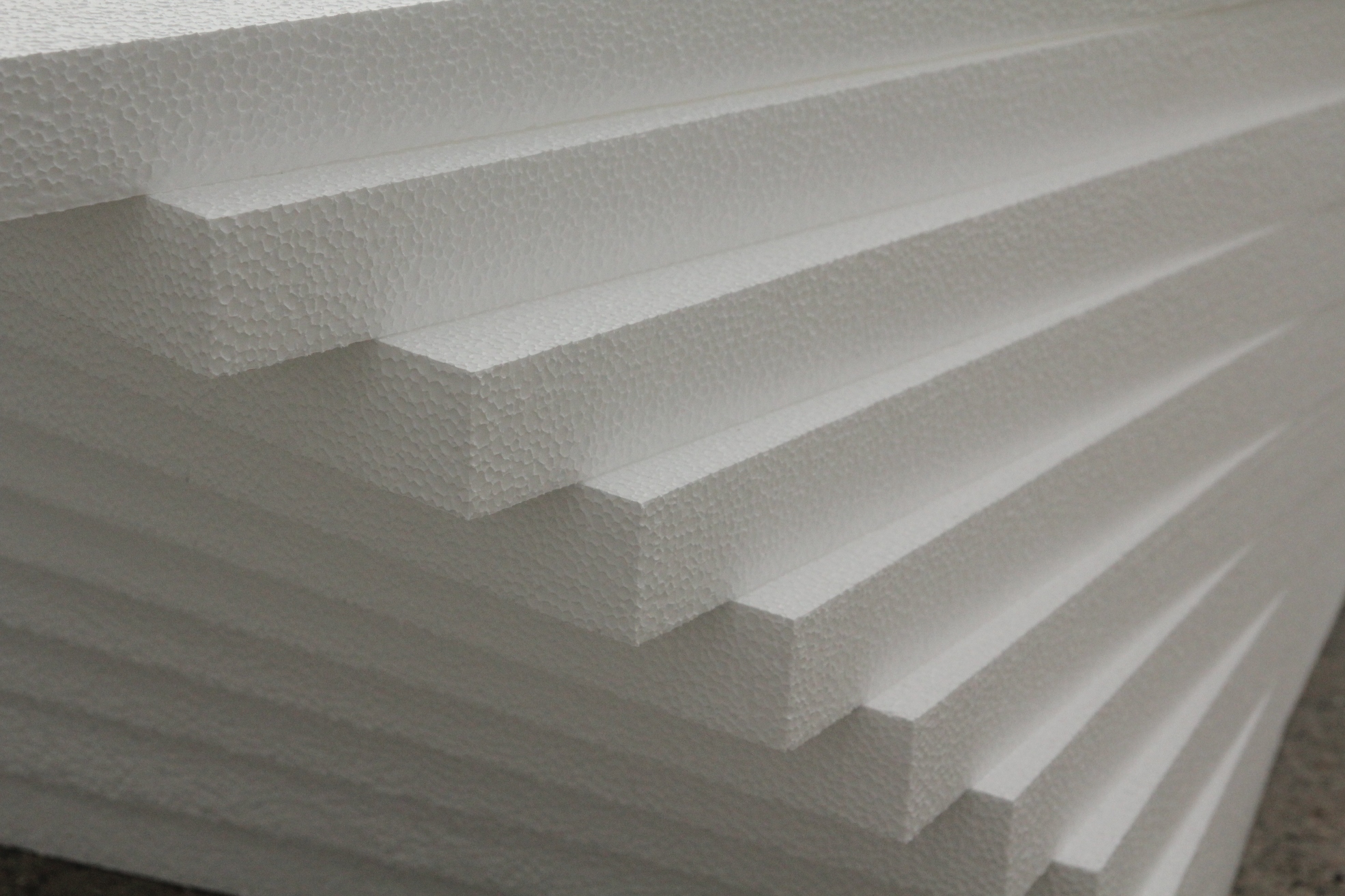
Extruded Styrofoam
This is already a more perfect insulation, a material related to foam, but the production method is completely different, hence the difference in properties.
pros:
- low thermal conductivity (0.028-0.034 W / m * C). If the house is behind the Arctic Circle, then this is the best solution;
- light weight;
- ease of installation;
- moisture resistance;
- sufficiently high strength.
Of the serious disadvantages, vapor tightness, flammability and high price.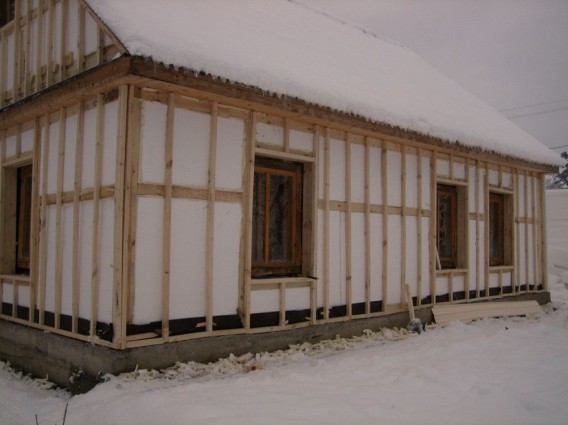
PVC foam
The insulation is made on the basis of polyvinyl chloride (PVC). The result is a lightweight cellular material with an impressive array of benefits:
- high strength, higher than that of extruded polystyrene foam;
- low coefficient of thermal conductivity (0.035-0.07 W / m * C)
- resistance to burning;
- good vapor permeability, the highest in this class of materials;
- biostability.
Everything would be perfect, if not for the price. The material is very expensive, and during combustion, although prone to self-extinguishing, it releases hydrogen chloride, which when combined with water gives hydrochloric acid.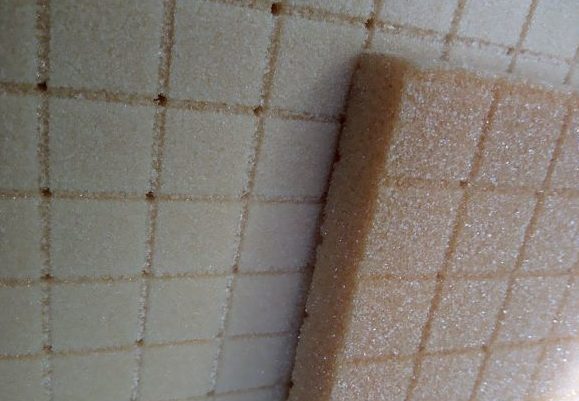
No. 6. Polyurethane foam for warming a wooden house
This type of insulation has recently been used more and more often, and it is precisely its sprayed version. There is another option in the form of plates. Sprayed polyurethane foam It requires the use of special equipment, but it fills all the gaps well, creates an integral coating.
pros:
- low coefficient of thermal conductivity (0.019 W / m * C);
- resistance to temperature extremes, durability;
- resistance to fire, rodents, rot;
- light weight;
- resistance to water.
The main disadvantage is vapor impermeability, according to this indicator the material is 50 times worse than mineral wool. In addition, for spraying you will need special equipment, which must be managed by a professional, and this affects the price. Polyurethane foam is afraid of sunlight. Frankly, it is not very suitable for wooden houses, but if the goal is not to maintain the ability of the structure to breathe, then this insulation can be used.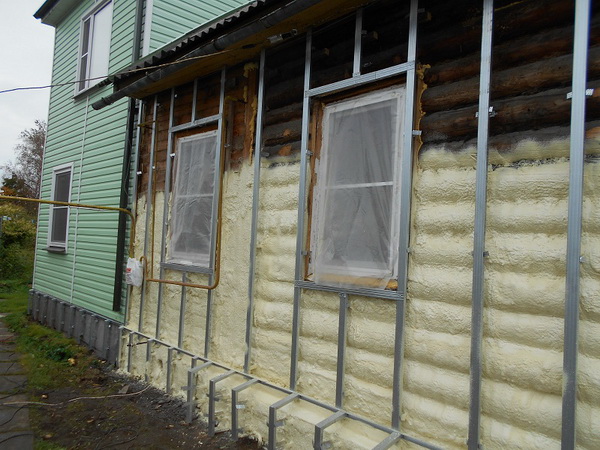
Number 7. Calculation of insulation thickness
To count what layer of insulation is neededYou can use special calculators or specialist services. In this case, the presence of windows, the required temperature in the house and other parameters are taken into account. The calculation can be performed independently:
- we determine the value of the normalized heat transfer resistance of the walls of the house for your region. The easiest way to look at the table. Let's say the house is somewhere in the suburbs, then the necessary resistance is 3.28 m2* C / W. This indicator should be achieved due to the heat transfer resistance of the walls and insulation;

- we determine the coefficient of resistance to heat transfer of existing walls of the house. Let's say the house is made of pine timber, for which the resistance is 0.18 W / m * C;

- wall thickness of 20 cm, which means that the heat transfer resistance will be 0.2 / 0.18 W / m * C - 1.11 m2* C / W;
- difference from the standard value (3.28-1.11) = 2.17 m2* C / W;
- in order to achieve the required resistance, it is necessary to use a heater. We select stone wool with a coefficient of thermal conductivity of 0.04 W / m * C. We get 2.17 m2* C / W * 0.04 W / m * C = 0.0868 m, or 8.7 cm. You can use cotton wool 10 cm thick.
Properly selected and installed insulation will make a wooden house more durable and comfortable, and externally the walls can be sheathed with a block house so as not to lose a unique look.

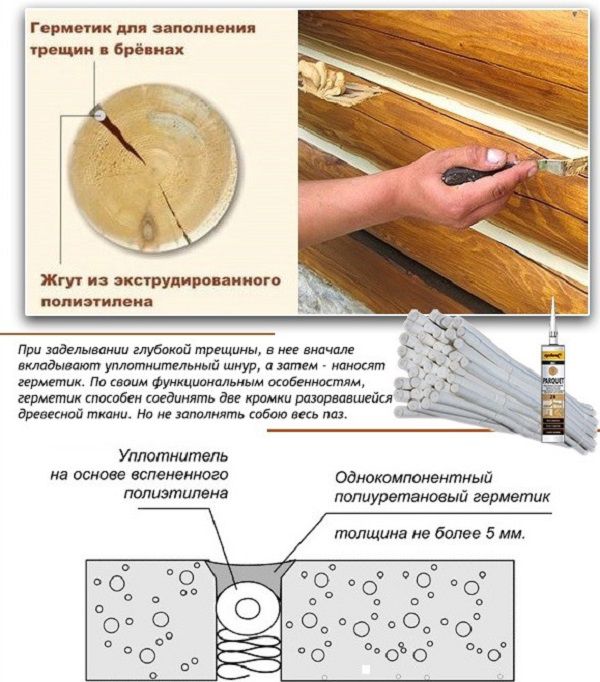
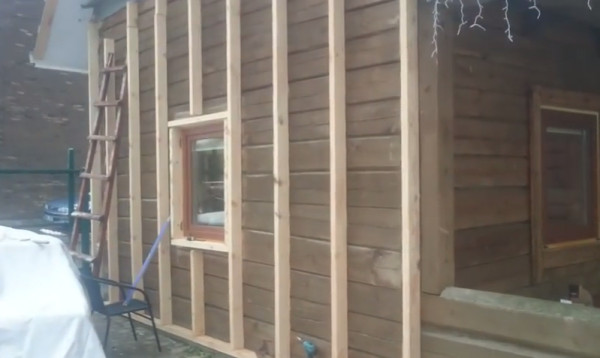


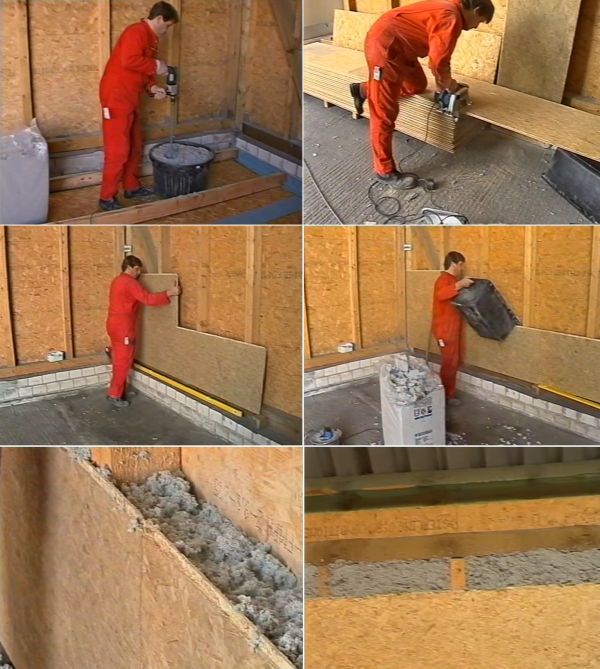



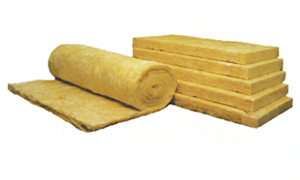
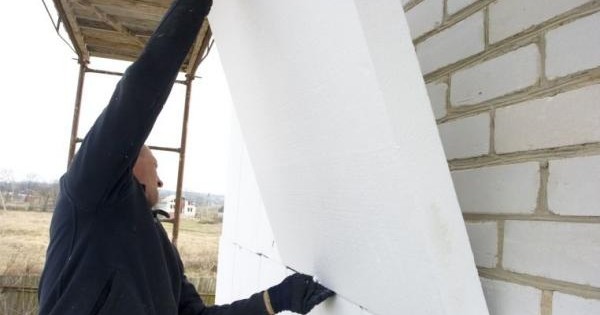
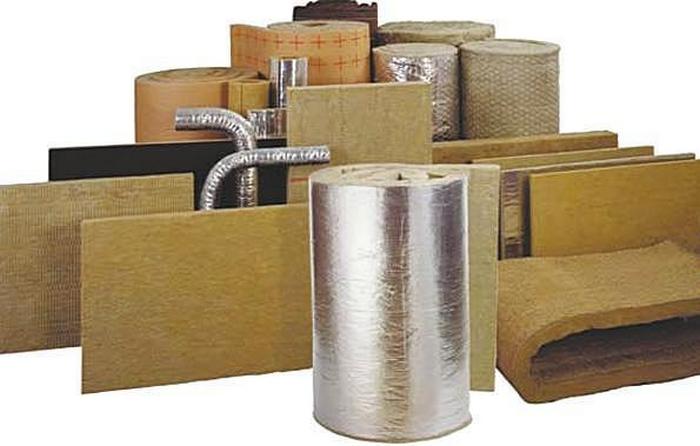
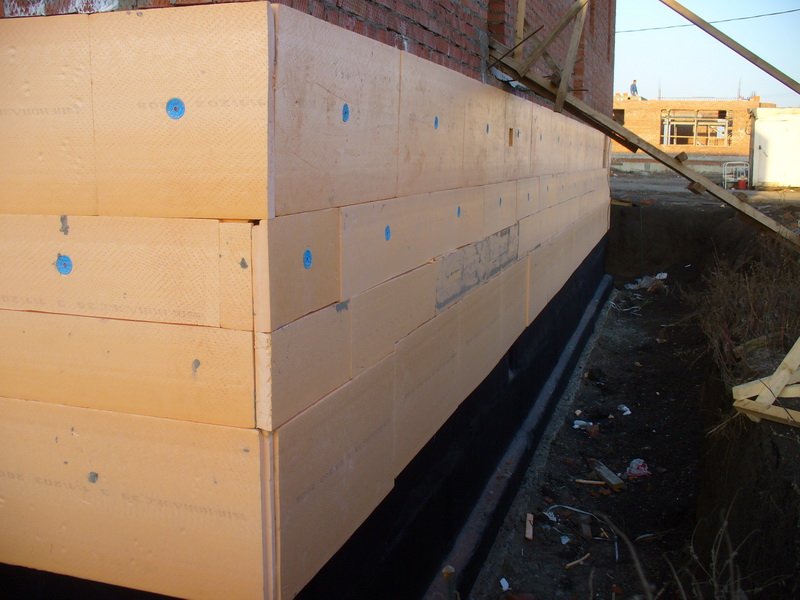
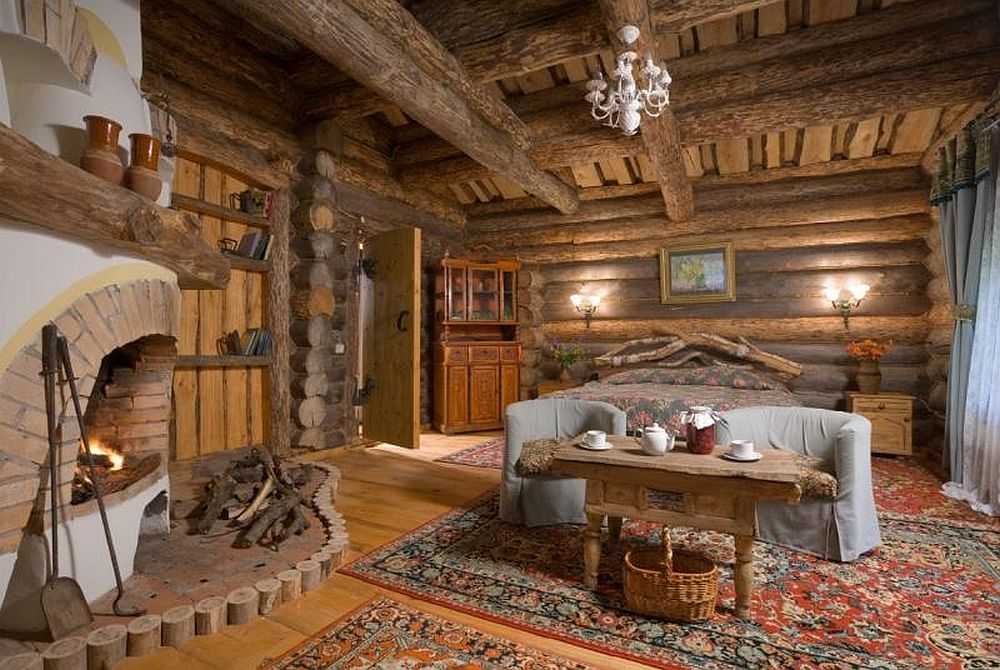
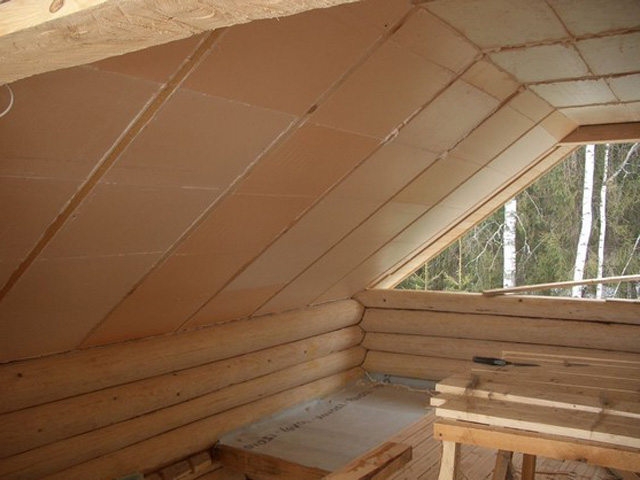
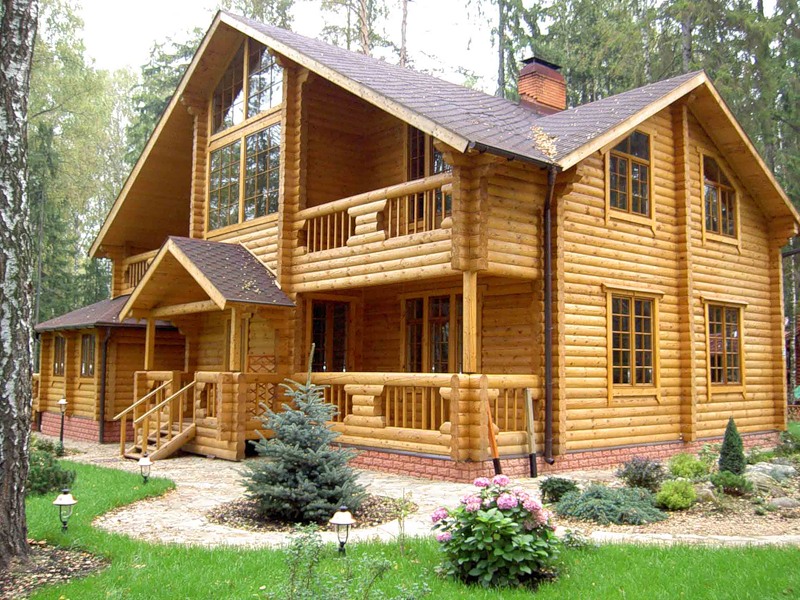
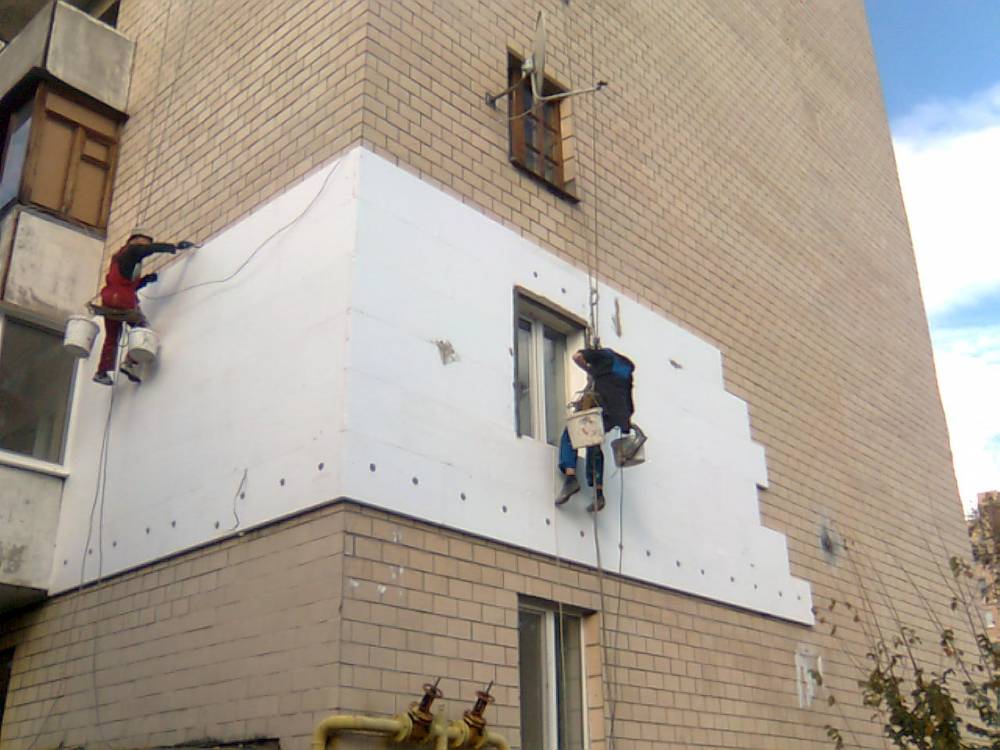

A competent description among the heap of copyright.
Thanks!